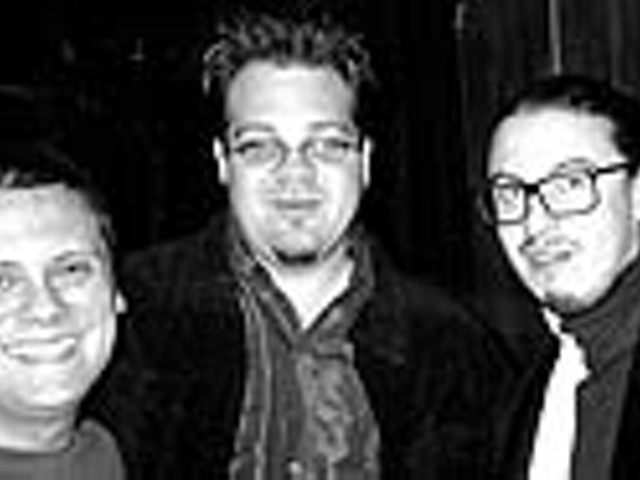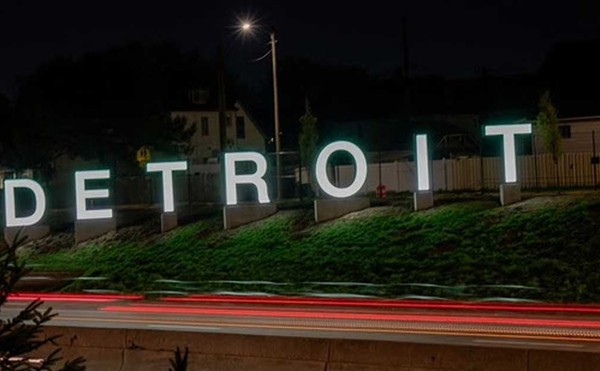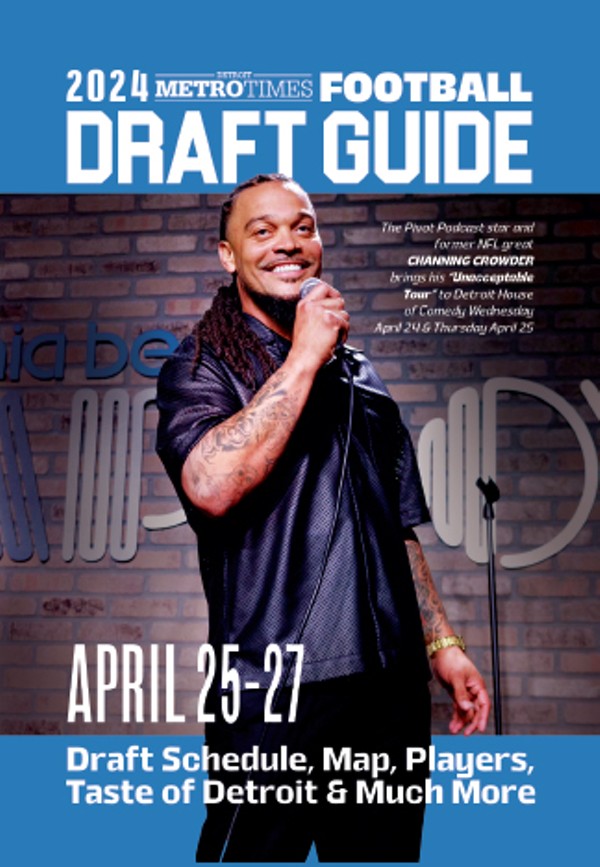It’s no secret that kids have taken over network television. Shows such as "Dawson’s Creek," "Buffy The Vampire Slayer" and "Felicity" have ruled the growing niche of teen viewerland for a couple years now.
But now that a crop of clones has popped up, it seems as though every network exec wants to provide an alternate reality for kids who’ve finished their homework and need to see that somewhere, even far away in TV Land, high school is an attractive place where endings are generally happy, if not bittersweet, and life’s big moments are bumpered by appropriate music crafted by sensitive singer-songwriters.
It’s a breeze to get a gig in La-La land these days if you’re between 16 and 25 and look anything like Sarah Michelle Gellar, Katie Holmes or James Van Der Beek (i.e. white, a bit mopey, fresh-faced and attractive – but not too attractive).
Television networks, even the unhip big three, have realized the best way to set themselves up for the next millennium is by latching on to teens, the latest gold mine of an audience.
In turn, networks are training tomorrow’s and today’s conspicuous consumers to turn on, tune in and drop into these carefully constructed otherworlds of parentless bliss.
Sometimes, as in the case of "Dawson’s," it plays well, but there’s a distinct air of adults rewriting the script of adolescence.
Even with the cheeky fun of "Sabrina the Teenage Witch" and the never-ending "Boy Meets World," the original three networks are like 40-year-olds who think they’re hip when they talk about "the mosh pits" and "the Limp Biscuits."
Worse still, the proliferation of genre-breaking, attractive teen dramas and comedies has become prep school for the further world domination of even more teen-oriented shows and Hollywood movies.
But the shows are addictive and the dial is populated with enough truly original programming – such as newcomers "Roswell" (WB) and "Angel" (WB, too!) – to encourage plenty of viewing, even by those over 20.
Kurt Vonnegut said high school is closer to the core of the American experience than anything else. So, if half of prime-time TV’s a high school, we’d better tune in. Here’s our comparative study of the Stridex landscape:
Supernatural=
superfashionable
"Sabrina the Teenage Witch"/"Roswell"/ "Charmed"/"Buffy The Vampire Slayer"
Without invoking the specter of premillennial spirituality, something mysterious has caused network programmers to latch on to phenomena unexplained by the Christian faith.
Perhaps it’s just another device for scriptwriters who’ve been out of high school too long to pull it off credibly every week. Perhaps it’s a clever metaphor for adolescent alienation. Most likely, though, it’s a clever gimmick for marketing cross-promotions and easily translatable films, made-for-TV movies and animated series.
In any case, the network dial hasn’t been so populated by magic-wielding, impeccably dressed-and-coifed witches, vampires, vampire killers and aliens since "Bewitched," "I Dream of Jeannie" and (yes) "The X-Files."
The reigning king and queen of this realm are, of course, Sarah Michelle Gellar and David Borneaz (aka Angel, who now has his own show and his own vampire killing to attend to every week). The flip cynicism of Buffy and friends lights the way for the self-aware verbal sparring of the rest of the other-worldly kids.
"Sabrina" has the righteous edge as her family/coven of witches gets on just fine and has wacky adventures without too much interference from the testo side of the gender coin.
"Roswell," however, feels too familiar and is too mysterious and attractively lit for viewers to resist its charms. Like the "X-Files" meets "My So-Called Life" meets Buffy & Co., the tale of orphaned aliens in human form living in the world’s UFO capital is just too juicy. But it takes a suspension of disbelief equal to accepting Luke Perry playing a teenager to sustain interest in the moody aliens’ struggle to retain anonymity.
"Charmed," of course, continues on the path that such films as The Craft and Practical Magic proved so marketable. It also holds the collective second-act "star power" of "90210" & "Melrose Place" alums Shannen Doherty and Alyssa Milano.
Battle of the
off-season remakes
"Jesse"/"Felicity"/
"Time of Your Life"
These are the tales of three independent women, living alone while coming to terms with their changing identities in a TV world that is confusing, chaotic, unsettling and – of course – very attractive.
Unfortunately, in the twisted mind of the TV junkie, no setting, character or fashion remake can ever erase the image of Kelly Bundy from the minds of, particularly, male viewers of "Jesse" (no matter how hard NBC’s makeover mavens try to make Christina Applegate look like Jennifer Aniston).
However – and this comes as some small surprise – the ensemble around Applegate (one of the most culturally, racially and economically diverse of the network bunch) elevates the struggles of a single mom above a handful of the peacock network’s newer laugh-track institutions.
In "Time of Your Life," it’s yet to be seen just how well young Ms. Hewitt (or "Love," as her friends call her) will stand up outside the mopey "Party of Five" vacuum. The girl we’ve come to know as Bailey’s better half has had an about-face pulled on her character motivations and seems to be gearing up for some spunky lessons in inventing herself in a more diva-esque mode.
Former Mouseketeer Kerri Russell wins this particular standoff, with the simple truth-or-dare moronic act of shearing off the locks that endeared her to the world. Her sensitive girl alone is as grounded in tangible outside-world reality as any of WB’s exercises in escapist introspection. (And, I have to admit, "Felicity" is as well-crafted and moving a serial as any episode of the grown-up trials of "Judging Amy" or "Ally McBeal.")
High school and the open-book soul
"Dawson’s Creek"/
"Popular"/"Get Real"
Let’s hear it for the sensitive seniors. Dawson and his pals have set the high school-based ensemble bar pretty high (these kids’ verbal gymnastics, while bordering on ridiculous, are ever entertaining). "Dawson’s" actors have become the templates upon which casting agents cram aspiring talent in their efforts to populate lesser shows (see also: "Popular"), and, gasp!, there are even plot lines involving homosexuality and a sort of network feminism. The unlucky byproduct of "Dawson’s"’ success is that viewers are subjected to all manner of mediocre background music product tie-ins. Paula Cole can thank James Van Der Beek and pals later.
We’ll just diagnose the folks who concocted the rest of this batch of beautiful people and dorks with a serious case of "My So-Called Life" disease. Where’s the soulful-yet-blank stare of Claire Danes when you really need it?
The fourth-wall shenanigans in "Get Real"(every member of the central family has diarrhea of the mouth, which they share with the audience) are the most cloying gimmick since Bobcat Goldthwait’s puppet-dog character on the "Married With Children" knockoff, "Unhappily Ever After."
But, as in life, the geeks eventually carry the day.
"Popular," from all indications, looks to be the first casualty of an oversaturated market. With allegiances already formed with most of TV Land’s ongoing serial adolescents, it’ll be hard for this stunningly unoriginal pack of vain worrywarts to win any empathy.
Revisiting
awkwardness
"Freaks and Geeks"/
"That ’70s Show"
Everybody loves the underdog, even (or especially) when that underdog is a gangly high school kid with a handful of faithful compatriots in dorkiness – regardless of whether Van Halen or Big Star provides the soundtrack.
"Freaks & Geeks" offers the first real glimpse at what ’80s nostalgia will feel like. In large part, it’s an endearing exercise thus far. The kids actually seem quite freaky and geeky, an anomaly in the teen landscape. They’re self-aware, but oblivious enough to allow viewers (whether 20/30-something or younger) to suspend our disbelief. The show plays like a more energetic "Wonder Years" and that ain’t all bad.
The crew that hits the bong in Eric Foreman’s basement on "That ’70s Show" may be the most authentic-looking bunch of ’90s kids to don the bell-bottoms for television (Foreman’s paramour Donna is a dead ringer for a younger Marilu Henner).
The archetypes are spot-on (though, we’re left to wonder just where exchange student Fez is from) and the writers wisely allow the ’70s to be the setting rather than the central focus, allowing the kitsch to flow seamlessly. In many respects, "That ’70s Show" is a direct descendent of "Happy Days." As such, it shines brighter than many other shows thanks to its balance between fluff comedy and sincere character interaction.
Despite the current boom of post-boomer kiddies, it’s inevitable that this recent proliferation of acne-free teen shows must, like high school itself, end.
It remains to be seen how many of them will survive to limp on into the college years in denial that much of their appeal could be chalked up to youthful vigor.
But, judging by the number of nonteens enjoying a guilty indulgence or two with these shows, there’s always an element of denial that youth has faded. At least enough to guarantee an audience hungry to revise its memories of youth through the miracle of TV.





